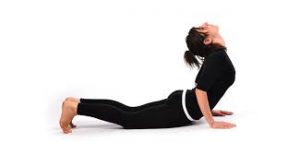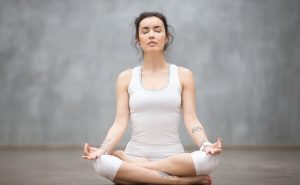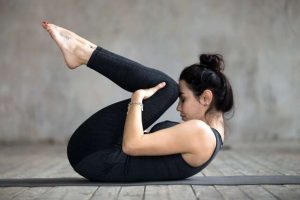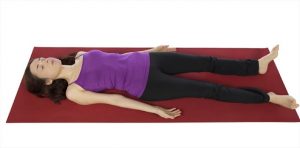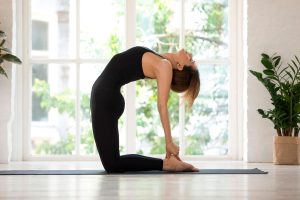BRONCHITIS – YOGA ASANAS
- December 23, 2022
- Posted by Dr. Vaidya Karanvir Singh
- 0 Comment(s)
Table of Contents
WHAT IS BRONCHITIS?
Bronchitis is a medical condition in which there occurs inflammation of the airways of lungs. Trachea and bronchi are the air tubules which carry air to and from the lungs. They get irritated and swell up due to any reason. The bronchi become thick and there is excessive production of mucus leading to cough. Cough is the main symptom of bronchitis. It can last for a few days to a couple of weeks. Infection, smoking and chemical irritants are some of the common causes of bronchitis.
Bronchitis is of two types – acute and chronic bronchitis. Acute bronchitis is very common and mostly develops from a respiratory infection. However, chronic bronchitis is a long term condition which is caused by the constant inflammation of the air tubules. It is mostly caused by smoking.
Acute bronchitis gets cured within a few days but chronic bronchitis is difficult to treat. Chronic bronchitis comes under chronic obstructive pulmonary disease (COPD). With dietary and lifestyle changes, the symptoms can be managed.
WHAT CAUSES BRONCHITIS?
Bronchitis is caused by the following factors:
- Viral infection from different viruses such as adenovirus, rhinovirus, coronavirus, etc
- Bacteria like Bordetella pertussis, Mycoplasma pneumonia, etc
- Cigarette smoking
- Weakened immune system
- Toxic fumes in air
- Air pollution
- Intake of tobacco products or marijuana
- Having a genetic predisposition
- Suffering from asthma
- Repeated bouts of acidity
- Allergies
WHAT ARE THE SYMPTOMS OF BRONCHITIS?
Following are the common signs and symptoms of bronchitis:
- Tightness in chest
- Shortness of breath
- Runny nose
- Persistent cough
- Feeling tired
- Production of excessive mucus
- Mucus can be of white, green or grayish color
- Presence of blood in mucus
- Fever and chills
- Tenderness in chest
- Wheezing sound during breathing
HOW BRONCHITIS CAN BE PREVENTED?
With some of the following steps, bronchitis can be prevented:
- Eating a healthy diet
- Regular physical exercise
- Avoid cigarette smoking
- Wear a mask in polluted areas
- Washing hands regularly
- Getting vaccine of flu or pertussis
- Take proper rest
- Avoid triggers like dust, pollen, pets, etc
HOW YOGA CAN BE BENEFICIAL FOR TREATING BRONCHITIS?
Yoga is very good for treating various types of respiratory disorders. There are several types of asanas which are done in respiratory problems. They help in improving the efficiency of lungs and makes the flow of air smooth into and out of the lungs.
Following are the asanas which are helpful in bronchitis:
1. BHUJANGASANA
Bhujanga means cobra and asana means body posture. Bhujangasana is the cobra or snake pose. It can be done easily at home while lying down on the stomach and then stretching. It gives a good stretch to the body and instantly relieves stress.
How to do it:
- Lie down in stomach with the toes flat and soles facing upwards.
- Rest the forehead on the ground, keep the legs closer with feet and heels touching each other.
- Now slowly lift the body while taking a deep breath in. The navel should be kept in ground level.
- Both the hands should have equal pressure while pulling on and off of the torso from the ground.
- Hold the pose for 4-5 breaths. Then, breathe out and bring the abdomen, chest and head gently on floor.
- Repeat it for 4-5 times.
Contraindications:
- Pregnancy
- Carpal tunnel syndrome
- Hernia
- Recent abdominal surgery
- Fracture of ribs or wrist joints
2. KAPAL BHATI
Kapalbhati pranayam is a breath conscious yoga practice. It helps in strengthening immune system of body and keeps our body and mind healthy. Bu regularizing our breath, the stress hormone of the body decreases and excessive acid production is reduced.
How to do it:
- Sit in a straight posture with spine erect and place the hands on knees with palms open.
- Then take a deep breath in and exhale. During exhalation, pull the navel inwards as much as a person feels comfortable.
- As the navel and abdomen relaxes, the air flows in deeply.
- One should take 20 rounds of breath to complete one round of kapalbhati.
3. PAVANMUKTASANA
Pavan means air, mukta means release and asana means body posture. So pawanmuktasana is a wind-relieving asana. Both mind and stomach are connected. If stomach is healthy and a person ha healthy mind and vice-versa. Pawanmuktasana helps in relieving constipation and gas.
How to do it:
- Lie on the back with joined feet and arms beside the body.
- Bring the right knee towards the chest and press the thigh with the clasped hands.
- Then bring the left knee towards the chest. Press both the knees against the stomach with the clasped hands.
- Lift the head and chest off the floor. Hold this position for a few minutes. Then relax.
Contraindications:
- Heart problem
- Hernia
- Slip disc
- Problem in testicles
- Menstruation
- Neck problem
- Back problem
4. SHAVASANA
Shava means corpse and asana means body posture. Shavasana is also known as corpse pose. This asana is a rest and relaxation posture. It is usually performed at the end of a yoga session. It helps in deep healing of the body.
How to do it:
- Lie flat on the back without any cushions or props. Close your eyes.
- Keep the legs apart comfortably and let the feet and knees relax.
- The arms should be kept aside with a little distance from the body. Keep the palms open and facing upwards.
- Breathe slowly and gently and slowly relax your entire body. Surrender the whole body and let go everything. But do not fall asleep.
5. USTRASANA
Ustra means camel and asana means body posture. It is a level back-bending yoga posture which causes opening of heart chakra. This posture increases flexibility of body and strengthens the body posture.
How to do it:
- Kneel on the mat and place the hands on the hips.
- The soles of the feet should be facing the ceiling.
- Arch the back and slide the palms over the feet till the arms are straight.
- Avoid straining the neck and keep it in a neural position.
- Stay in this position for a few seconds.
Contraindications:
- Injury of the back
- Neck injury
- High blood pressure
- Hypotension

Dr. Vaidya Karanvir Singh is the younger Vaidya in Chandigarh Ayurved & Panchakarma Centre. He is the fourth generation in his family who is practicing as a general consultant in Ayurved & Panchakarma treatment at Chandigarh. In his practice, he had treated more than 1 Lakh Plus patients worldwide.


